Ditapis dengan
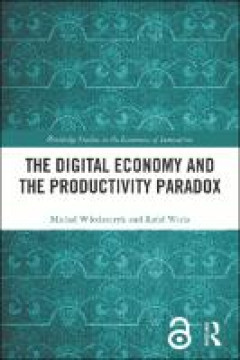
E-book The Digital Economy and the Productivity Paradox
Despite the billions of dollars invested in digitalization, productivity growth in developed economies remains sluggish and the promised technological revolution has yet to deliver its full potential. This concise book questions why digitalization is not translating into higher productivity and economic expansion, exploring this paradox through the lens of Schumpeter's creative destruction hypo…
- Edisi
- -
- ISBN/ISSN
- 9781040558027
- Deskripsi Fisik
- 210 hlmn
- Judul Seri
- -
- No. Panggil
- 338.064 WLO t
E-book The Case of Mexico
In this chapter, I employ a model of the consolidated government budget constraint to study the monetary and fiscal history of Mexico. I study the period 1960–2017, dividing it into three subperiods: rapid growth and monetary expansion, 1960–1982; crisis and reform, 1982–1995; and slow growth and macroeconomic stability, 1995–2017. The crisis and reform period includes the major economi…
- Edisi
- -
- ISBN/ISSN
- -
- Deskripsi Fisik
- 40 hlm
- Judul Seri
- -
- No. Panggil
- 338.91 MEZ t
E-book Doing Business 2020 : Luxembourg
This topic measures the number of procedures, time, cost and paid-in minimum capital requirement for a small- to medium-sized limited liability company to start up and formally operate in each economy’s largest business city. To make the data comparable across 190 economies, Doing Business uses a standardized business that is 100% domestically owned, has start-up capital equivalent to 10 tim…
- Edisi
- -
- ISBN/ISSN
- -
- Deskripsi Fisik
- 66 hlm
- Judul Seri
- -
- No. Panggil
- 338.9 WOR d
E-book Doing Business 2020 : Ireland
This topic measures the number of procedures, time, cost and paid-in minimum capital requirement for a small- to medium-sized limited liability company to start up and formally operate in each economy’s largest business city. To make the data comparable across 190 economies, this book uses a standardized business that is 100% domestically owned, has start-up capital equivalent to 10 times th…
- Edisi
- -
- ISBN/ISSN
- -
- Deskripsi Fisik
- 68 hlm
- Judul Seri
- -
- No. Panggil
- 338.9 WOR d
E-book Doing Business 2020 : Morocco
This topic measures the number of procedures, time, cost and paid-in minimum capital requirement for a small- to medium-sized limited liability company to start up and formally operate in each economy’s largest business city. To make the data comparable across 190 economies, this ebook uses a standardized business that is 100% domestically owned, has start-up capital equivalent to 10 times t…
- Edisi
- -
- ISBN/ISSN
- -
- Deskripsi Fisik
- 67 hlm
- Judul Seri
- -
- No. Panggil
- 338.9642 WOR d
E-book Reforming Kazakhstan
Windfalls from hydrocarbons and metals have largely driven growth in recent decades. The extractive sector accounts for nearly 30% of GDP, two-thirds of exports, three quarters of the stock of FDI and half of government revenues. Like other lessdiversified economies, Kazakhstan is vulnerable to commodity-price fluctuations and other problems associated with resourcebased development. To sustain…
- Edisi
- -
- ISBN/ISSN
- -
- Deskripsi Fisik
- 187 hlm
- Judul Seri
- -
- No. Panggil
- 338.95945 OEC r
E-book Doing Business 2020 : Mongolia
This topic measures the number of procedures, time, cost and paid-in minimum capital requirement for a small- to medium-sized limited liability company to start up and formally operate in each economy’s largest business city. To make the data comparable across 190 economies, uses a standardized business that is 100% domestically owned, has start-up capital equivalent to 10 times the income p…
- Edisi
- -
- ISBN/ISSN
- -
- Deskripsi Fisik
- 67 hlm
- Judul Seri
- -
- No. Panggil
- 338.9517 WOR d
E-book Doing Business 2020 : Turkey
This topic measures the number of procedures, time, cost and paid-in minimum capital requirement for a small- to medium-sized limited liability company to start up and formally operate in each economy’s largest business city. To make the data comparable across 190 Doing Business economies, uses a standardized business that is 100% domestically owned, has start-up capital equivalent to 10 tim…
- Edisi
- -
- ISBN/ISSN
- -
- Deskripsi Fisik
- 70 hlm
- Judul Seri
- -
- No. Panggil
- 338.9 WOR d
E-book Mexico's Plan
Increase vehicle production for national consumption by 10%. Increase national content by 15% through the substitution of vehicle imports, by substituting imports of electronic components for vehicles, expanding aluminum auto parts production, and developing battery cell production for electric vehicles. Manufacture trains in Mexico and/or their components. Double dual education plans.
- Edisi
- -
- ISBN/ISSN
- -
- Deskripsi Fisik
- 40 hlm
- Judul Seri
- -
- No. Panggil
- 338.972 GOB m
E-book Mexico 2030
In particular, the 2030 Implementation Initiative specifically supports its partner countries in anchoring the objectives of the 2030 Agenda in national political processes, increasing revenue and mobilising investments and strengthening the monitoring and review of the Agenda. The BMZ has thus created a unique bilateral initiative that starts where the need of the partner countries is greatest…
- Edisi
- -
- ISBN/ISSN
- -
- Deskripsi Fisik
- -
- Judul Seri
- -
- No. Panggil
- 338.972 FED m
E-book Doing Business : Thailand
This topic measures the number of procedures, time, cost and paid-in minimum capital requirement for a small- to medium-sized limited liability company to start up and formally operate in each economy’s largest business city. To make the data comparable across 190 economies, uses a standardized business that is 100% domestically owned, has start-up capital equivalent to 10 times the income p…
- Edisi
- -
- ISBN/ISSN
- -
- Deskripsi Fisik
- 67 hlm
- Judul Seri
- -
- No. Panggil
- 338.9593 WOR d
E-book Deals and Development : The Political Dynamics of Growth Episodes
Why are there such significant and persistent differences in living standardsacross countries? This is one of the most important and challenging areas ofdevelopment thinking and policy. Much of the focus in the academic andpolicy literature on‘growth’has been on steady-state or long-run average rateof growth of output per capita or, equivalently, comparinglevelsof income.But the focus onone…
- Edisi
- -
- ISBN/ISSN
- 9780198801641
- Deskripsi Fisik
- 395 hlm
- Judul Seri
- -
- No. Panggil
- 338.9 ACK d
E-book Thailand : Industrializationa nd Economic Catch-Up
Thailand joined the ranks of the upper-middle-income countries in 2011, with sustained high growth and rapid poverty reduction. Gross domestic product (GDP) grew an average of 9.5% per year between 1987 and 1996 on the back of political stability, a business-friendly regulatory environment, a large domestic market, open access to foreign investment, and greater participation in regional value c…
- Edisi
- -
- ISBN/ISSN
- 9789292572952
- Deskripsi Fisik
- 77 hlm
- Judul Seri
- -
- No. Panggil
- 330.9593 ADB t
E-book Philippines Economic Update : Braving the New Normal
A series of unforeseen events caused an abrupt halt to the Philippines’ strong growth momentum in early 2020. As a result, the Philippine economy contracted by 0.2 percent year-on-year in the first quarter of 2020, a sharp reversal from the 5.7 percent growth over the same period a year ago. The growth contraction – the first in over two decades – was driven by a series of unexpected even…
- Edisi
- -
- ISBN/ISSN
- -
- Deskripsi Fisik
- -
- Judul Seri
- -
- No. Panggil
- 330.91599 THE p
E-book Ethiopia 2030 : A Country Transformed
Spurred by public investment, its growth rate averaged more than 9 percent between 2000 and 2017. Gross domestic product per capita (measured in purchasing power parity or PPP has risen nine-fold since 1991, but remains low compared to other parts of the world (for example, emerging and developing Asian countries (figure 1)). Initially, per capita GDP growth barely exceeded population growth b…
- Edisi
- -
- ISBN/ISSN
- -
- Deskripsi Fisik
- 48 hlm
- Judul Seri
- -
- No. Panggil
- 338.9 UND e
E-book Circular and Transformative Economy
The increasing complexities with today’s interlinked challenges related to resource insecurities, the emergence of novel infectious diseases, socio?economic decline and environmental degradation require systemic approaches that address trade?offs, enhance synergies, minimise resource depletion, and promote waste reduction while operating within the planetary boundaries (Kimani?M…
- Edisi
- -
- ISBN/ISSN
- 9781003327615
- Deskripsi Fisik
- 303 hlm
- Judul Seri
- -
- No. Panggil
- 338.9 BAD c
E-book Grassroots Innovation Movements
In August 2015, while we were writing this book, a group of sustainability activists were gathering in the grounds of a borrowed château on the outskirts of Paris. They were intent upon ‘eco-hacking’ the future. What this meant was turning the château into a temporary innovation camp, equipped with the tools for develop-ing a variety of technologies of practical and symbolic…
- Edisi
- -
- ISBN/ISSN
- 9781315697888
- Deskripsi Fisik
- 241 hlm
- Judul Seri
- -
- No. Panggil
- 338.9 SMI g
E-book Leading Transformative Change Collectively : A Practitioner Guide to R…
For the first time in the history of humankind, global goals exist that guide our future. The UN’s 2015 Sustainable Development Goals (SDGs) provide a detailed framework for public, private, and civil society actors globally to bring about sig-nificant and transformative change towards a world that works for 100 percent of humanity and the …
- Edisi
- -
- ISBN/ISSN
- 9781003033561
- Deskripsi Fisik
- 377 hlm
- Judul Seri
- -
- No. Panggil
- 338.9 KUE l
E-book Innovating South-South Cooperation : Policies, Challenges and Prospects
South-South Cooperation (SSC) is both an old concept and a new idea, an old analysis and a new policy directive. Although the notion has existed for decades, it has grown in importance and function, especially since the early 2000s. It has transformed global economic structures, forcing us to redefine traditionally understood words, most notably “region” and “development.” It h…
- Edisi
- -
- ISBN/ISSN
- 9780776623214
- Deskripsi Fisik
- 409 hlm
- Judul Seri
- -
- No. Panggil
- 338.91 AGA i
E-book Economic Diversity in Contemporary Timor-Leste
For some time, narratives and projects aimed at improving and diversifying economic activities in Timor-Leste have been the leitmotivs of a number of development programs. Framing such endeavours are several assumptions about Timor-Leste’s economy, namely, that it is unproductive, weak and unfair; that most of it is made up of subsistence agriculture benefitt…
- Edisi
- -
- ISBN/ISSN
- 9789400604407
- Deskripsi Fisik
- 327 hlm
- Judul Seri
- -
- No. Panggil
- 330.915897 ALO e
E-book Business School Internationalisation in a Changing World
This is the Open Access edition of Global Focus from the European Foundation for Management Development (EFMD). Global Focus has become one of the most authoritative resources for in-depth analysis and updates on international management development. With features, topical reports, thought leadership and insight from leading experts from academia, business schools, companies and consultancies, …
- Edisi
- -
- ISBN/ISSN
- 9781003500629
- Deskripsi Fisik
- 146 hlm
- Judul Seri
- -
- No. Panggil
- 330.12 WOO b
E-book Argentina : Escaping Crises, Sustaining Growth, Sharing Prosperity
“Argentina: Escaping crisis, sustaining growth, sharing prosperity” is an analysis on the medium-term agenda to ensure growth and shared prosperity in Argentina and comes at a time when the country is embarking on deepening structural reforms while dealing with recent sudden financial market pressures that emerged in April 2018. The current government came into office at the end of 2015 fac…
- Edisi
- -
- ISBN/ISSN
- -
- Deskripsi Fisik
- 164 hlm
- Judul Seri
- -
- No. Panggil
- 330.982 WOR a
E-book Hot Property : The Housing Market in Major Cities
Global megatrends are re-shaping the world economic order. From urbanisation, tothe rise of the global middle classes, ageing population and technological trends,these changes all pose major implications for the built environment and demand forhousing in the short- and long-term. According to the latest projections by theUnited Nations, the world’s population is expected to grow by 2.9 billio…
- Edisi
- -
- ISBN/ISSN
- 9783030116743
- Deskripsi Fisik
- 220 hlm
- Judul Seri
- -
- No. Panggil
- 306.3 DOO h
E-book Poverty and Wealth in East Africa : A Conceptual History
overty and Wealth in East Africa is a conceptual history of poverty and wealth and of the poor and the wealthy over the past two millennia. It demonstrates the dynamism and diversity of people’s thinking about inequality in the region long before colonial conquest or incorporation into global trade networks. Sub-Saharan Africa’s economic woes and the poverty o…
- Edisi
- -
- ISBN/ISSN
- 9781478024514
- Deskripsi Fisik
- 313 hlm
- Judul Seri
- -
- No. Panggil
- 338.96 STE p
E-book Driving Digital Transformation : Lessons from Seven Developing Countries
The road’s potholes were a stark contrast to the destination of the coach-loadof young women driving over them: a brand new building housing one ofBangalore’s many internet-enabled service companies—this one providingaccountancy support services—newly built on the outskirts of the city. Thiscontrast is not something we saw only in India. In the overcrowded streets ofIndonesia’s capita…
- Edisi
- -
- ISBN/ISSN
- 9780192872845
- Deskripsi Fisik
- 241 hlm
- Judul Seri
- -
- No. Panggil
- 338.9 NDU d
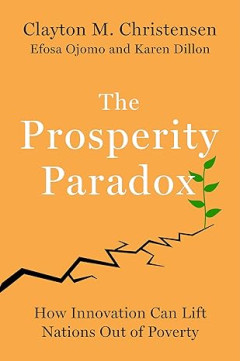
E-book The Prosperity Paradox: How Innovation Can Lift Nations Out of Poverty
Clayton M. Christensen, the author of such business classics as The Innovator’s Dilemma and the New York Times bestseller How Will You Measure Your Life, and co-authors Efosa Ojomo and Karen Dillon reveal why so many investments in economic development fail to generate sustainable prosperity, and offers a groundbreaking solution for true and lasting change. Global poverty is one of the wor…
- Edisi
- -
- ISBN/ISSN
- 9780062851826
- Deskripsi Fisik
- 282 halaman
- Judul Seri
- -
- No. Panggil
- 330.9 CHR t
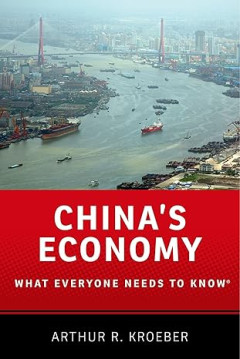
E-book China's Economy: What Everyone Needs to Know®
China's Economy: What Everyone Needs to Know® is a concise introduction to the most astonishing economic growth story of the last three decades. In the 1980s China was an impoverished backwater, struggling to escape the political turmoil and economic mismanagement of the Mao era. Today it is the world's second biggest economy, the largest manufacturing and trading nation, the consumer of half …
- Edisi
- -
- ISBN/ISSN
- 9780190239039
- Deskripsi Fisik
- 337 halaman
- Judul Seri
- -
- No. Panggil
- 330.91 KRO c
E-book Global Solutions, International Partnerships : The European Investment…
The world was not doing enough for sustainable development, even before the pandemic. The existing gap in financing for the achievement of the Sustainable Development Goals has been estimated at around $2.5 trillion.1 Growth in developing and emerging economies was, however, steadily reducing the number of people in extreme poverty. The recession caused by COVID-19 has reversed that process, al…
- Edisi
- -
- ISBN/ISSN
- 9789286150555
- Deskripsi Fisik
- 76 hlm
- Judul Seri
- -
- No. Panggil
- 338.9 EIB g
E-book Exile from the Grasslands : Tibetan Herders and Chinese Development Pr…
Whether this new project, along with its new and ambitious agenda, will in fact be any dif er ent from its forerunners or whether it will also end up using mass house construction and sedentarization to demonstrate devel-opment will become clear only in years to come. Statistics from 2020 and beyond will likely show that there are no longer any poor people—those with income below th…
- Edisi
- -
- ISBN/ISSN
- 9780295748207
- Deskripsi Fisik
- 189 hlm
- Judul Seri
- -
- No. Panggil
- 338.95147 PTA e
E-book Paths to the Emerging State in Asia and Africa
This volume addresses the issue of how a country, which was incorporated intothe world economy as a periphery, could create a path of economic developmentand industrialization as the ‘emerging state’ in Asia and Africa. We offer historicaland contemporary case studies of development paths, as well as the internationalbackground under which a transition to the emerging state was successfully…
- Edisi
- -
- ISBN/ISSN
- 9789811331312
- Deskripsi Fisik
- 304 hlm
- Judul Seri
- -
- No. Panggil
- 338.9 CUR p
E-book Energize the Base of the Pyramid
ccording to the statistics provided by Confederation of Danish Industries, 4 bil-lion people around the globe live on less than US$ 2 per day. The low-income market constitutes the majority of the consumers in the countries from Sub-Sa-haran Africa and Asia, and covers parts of Latin America, Eastern Europe and the Caribbean region. Despite the fact that 2.86 billion or 83 % of the Asian …
- Edisi
- -
- ISBN/ISSN
- 9783832549039
- Deskripsi Fisik
- 254 hlm
- Judul Seri
- -
- No. Panggil
- 338.9 AYA e
E-book India's global challenge : Growth and leadership in the 21st century
dia stands tall as a space power!” tweeted Prime Minister Narendra Modi just weeks before securing a second, spectac-ular landslide win in India’s general election in Spring 2019 by an even bigger margin than many had expected. Minutes earlier, he had announced in a rare televised speech that India had just succeeded in shooting down one of its own sate…
- Edisi
- -
- ISBN/ISSN
- 9788855260107
- Deskripsi Fisik
- 183 hlm
- Judul Seri
- -
- No. Panggil
- 338.954 CHI i
E-book London and the UK : A Declaration of Interdependence
London’s economy is both very specialised - in highly productive, export-oriented service sectors such as finance and insurance and advanced professional services – but also big enough to accommodate large numbers of jobs in most of the key employment sectors. Exports from the specialised sectors are a key driver of London’s trade surplus with the rest of the world. At the same time, Lond…
- Edisi
- -
- ISBN/ISSN
- 9781847817211
- Deskripsi Fisik
- 45 hlm
- Judul Seri
- -
- No. Panggil
- 338.9421 GRE l
E-book Forecasting : in Economics, Business, Finance and Beyond
One key field is economics, broadly defined. Governments, businesses, policy organizations, central banks, financial services firms, and economic consulting firms around the world routinely forecast major economic variables, such as gross domestic product (GDP), unemployment, consumption, investment, the price level, and interest rates. Governments use such forecasts to guide monetary and fisca…
- Edisi
- -
- ISBN/ISSN
- -
- Deskripsi Fisik
- 619 hlm
- Judul Seri
- -
- No. Panggil
- 330.0112 DIE f
E-book Cambodia : Diversifying Beyond Garments and Tourism Country Diagnostic…
The economy has grown rapidly, with real per capita income doubling in the 12 years to 2013. Human development has improved, marked by a significant decline in poverty and gains across a range of socioeconomic variables. The key sectors of the economy have gone from strength to strength, with Cambodia now the world’s 8th largest rice exporter and Asia’s 10th largest garment producer. The to…
- Edisi
- -
- ISBN/ISSN
- 9789292548087
- Deskripsi Fisik
- 175 hlm
- Judul Seri
- -
- No. Panggil
- 330.9596 ADB c
E-book Development Challenges in Africa Towards 2050
This report lays out a broad Africa 2050 scenario in which Africa catches up (or converges) with the rest of the world to narrow the gap in terms of living standards and productivity. It describes a future for Africa of individual prosperity in cohesive societies, competitive economies, and strong regional-global interaction. Under such a scenario, by 2050 per capita incomes would grow six-fold…
- Edisi
- -
- ISBN/ISSN
- -
- Deskripsi Fisik
- 164 hlm
- Judul Seri
- -
- No. Panggil
- 338.916 JIC d
E-book Encyclopedia of Finance
Absolute costadvantagescanplacecompetitors ata cost disadvantage, even if the scale of operations is similar for both firms. Such cost advantages can arise from an advanced position along the learning curve, where average costs decline as cumulative output rises over time. This differs from economies of scale, which involves the relationship between average costs and the output level per period…
- Edisi
- -
- ISBN/ISSN
- 0387263365
- Deskripsi Fisik
- 861 hlm
- Judul Seri
- -
- No. Panggil
- 330.03 CHE e
E-book Destination Perth : Developing Perth's Visitor Economy
The city is in the midst of a significant physical, social and cultural transformation and the strong State economy has created unparalleled city based investment opportunities for private and government sectors with transport, infrastructure, hotel, office and residential developments underway. Perth is experiencing a step change not seen in more than 40 years, brought on in response to a grow…
- Edisi
- -
- ISBN/ISSN
- -
- Deskripsi Fisik
- 68 hlm
- Judul Seri
- -
- No. Panggil
- 338.91 TOU d
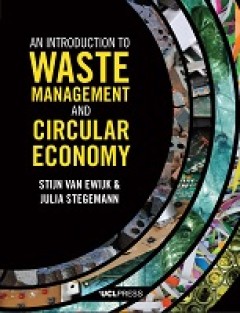
E-Book An Introduction to Waste Management and Circular Economy
This introductory textbook provides an essential interdisciplinary guide to waste management and circular economy. It helps students to understand the drivers of waste, the environmental, social, and economic impacts of waste generation, and best practices and technologies for waste management, recycling, energy recovery and disposal. With helpful, full-colour diagrams throughout, each chapter …
- Edisi
- -
- ISBN/ISSN
- 9781800084667
- Deskripsi Fisik
- 409 halaman
- Judul Seri
- -
- No. Panggil
- 332 EWI a
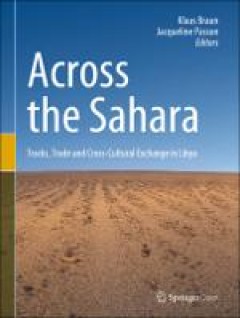
E-Book Across the Sahara: Tracks, Trade and Cross-Cultural Exchange in Libya
This open access book provides a multi-perspective approach to the caravan trade in the Sahara during the 19th century. Based on travelogues from European travelers, recently found Arab sources, historical maps and results from several expeditions, the book gives an overview of the historical periods of the caravan trade as well as detailed information about the infrastructure which was necessa…
- Edisi
- -
- ISBN/ISSN
- 9783030001452
- Deskripsi Fisik
- 260 halaman
- Judul Seri
- -
- No. Panggil
- 330.9 BRA a
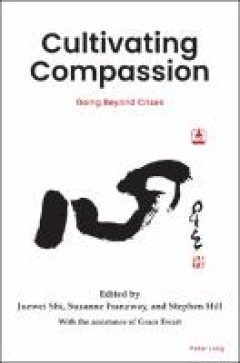
E-Book Cultivating Compassion: Going Beyond Crises
The massive disruptions caused by climate change, the Covid-19 Pandemic, war, and ever-rising inequalities have presented the world with challenges across social and economic life, health and education, policy, politics, and community life. Compassion is a central Buddhist value and practice but is also essential to our survival. Defined as feeling genuine concern about the suffering of others …
- Edisi
- -
- ISBN/ISSN
- 9781803741949
- Deskripsi Fisik
- 9783631868102
- Judul Seri
- -
- No. Panggil
- 181.043 SHI c

E-Book Privilege, Economy and State in Old Regime France: Marine Insurance, W…
This book closely analyses the rise and fall of Louis XIV's marine insurance institutions in Paris, which were central to the French monarchy's efforts to stimulate commerce, colonial enterprise and economic growth. These institutions were the projects of two leading ministers, Jean-Baptiste Colbert and his son, the Marquis de Seignelay. While both men recognised that marine insurance was cruci…
- Edisi
- -
- ISBN/ISSN
- 9781800108813
- Deskripsi Fisik
- 378 halaman
- Judul Seri
- -
- No. Panggil
- 944 WAD p
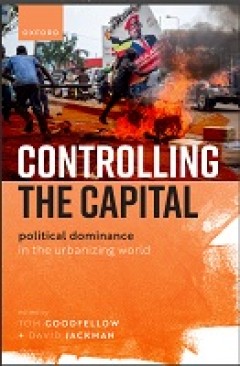
E-Book Controlling the Capital: Political Dominance in the Urbanizing World
- Edisi
- -
- ISBN/ISSN
- 9780192868329
- Deskripsi Fisik
- 289 halaman
- Judul Seri
- -
- No. Panggil
- 330.91 GOO c
- Edisi
- -
- ISBN/ISSN
- 9780192868329
- Deskripsi Fisik
- 289 halaman
- Judul Seri
- -
- No. Panggil
- 330.91 GOO c
E-book Transformative pathways to sustainability : Learning across discipline…
This book tries to address these questions. The research detailed in this volume (which took place pre-Covid-19) engages with the specificities of dif-ferent contexts around the world, while seeking general lessons that can be drawn about transformations to sustainability and the role of research within them. It thus documents a new approach (or approaches) that…
- Edisi
- -
- ISBN/ISSN
- 9780429331930
- Deskripsi Fisik
- 267 hlm
- Judul Seri
- -
- No. Panggil
- 338.9 ABR t
E-book The Global Fund Strategy 2017 - 2022
The Global Fund was designed to evolve to best meet the needs of a changing world context. More than 50 percent of the burden of each of the three diseases and the majority of the world’s poor now live in countries classified by the World Bank as middle income but still varying greatly in terms of quality, access, and capacity of health service provision. Simultaneously, concentrations of dis…
- Edisi
- -
- ISBN/ISSN
- -
- Deskripsi Fisik
- 40 hlm
- Judul Seri
- -
- No. Panggil
- 338.91 THE t
E-book Spationomy : Spatial Exploration of Economic Data and Methods of Inter…
The project aims to exchange interdisciplinary knowledge in the fields of economics and geomatics. For the newly introduced courses, interdisciplinary learning materials have been developed by a team of lecturers from four different universities in three countries. In a first study block, students were taught methods from the two main research fields. Afterwards, the knowledge gained had to be …
- Edisi
- -
- ISBN/ISSN
- 9783030266264
- Deskripsi Fisik
- 320 hlm
- Judul Seri
- -
- No. Panggil
- 330.9 PAS s
E-book NATO 2030 : United for a New Era
NATO enters the eighth decade of its existence with both a longer record of success and a wider assortment of looming challenges than its founders could have foreseen when they signed the Washington Treaty in April 1949. In the thirty years since the collapse of the Soviet threat that called NATO into existence, the Western Alliance has defied innumerable predictions of its imminent demise. It …
- Edisi
- -
- ISBN/ISSN
- -
- Deskripsi Fisik
- 67 hlm
- Judul Seri
- -
- No. Panggil
- 338.91 NAT n
E-book Sweden and the 2030 Agenda
The Swedish Government also views the 2030 Agenda as a dynamic framework that opens up new global opportunities for all societies and stakeholders, both nationally and internationally. It is an agenda for a common and long-term sustainable environmental, social and economic development, linked to fighting poverty and hunger and inequality within and between countries, in order to build peaceful…
- Edisi
- -
- ISBN/ISSN
- -
- Deskripsi Fisik
- 88 hlm
- Judul Seri
- -
- No. Panggil
- 338.9486 SUS s
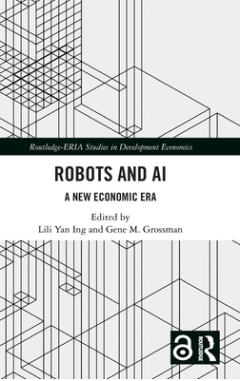
E-book Robots and AI
Robots and artificial intelligence (AI) are powerful forces that will likely have large impacts on the size, direction, and composition of international trade flows. This book discusses how industrial robots, automation, and AI affect international growth, trade, productivity, employment, wages, and welfare. The book explains new approaches on how robots and artificial intelligence affect the w…
- Edisi
- -
- ISBN/ISSN
- 9781003275534
- Deskripsi Fisik
- -
- Judul Seri
- -
- No. Panggil
- 629 ING r
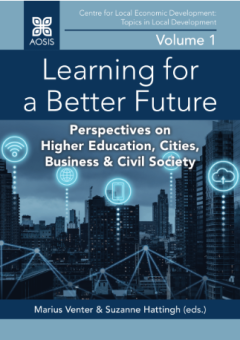
E-book Learning for a Better Future
Various international scholars and associates of the PASCAL (Place, Social Capital and Learning Regions) International Observatory (Africa hub), under the auspices of the Centre for Local Economic Development (CENLED) based at the University of Johannesburg (UJ), have contributed chapters in this scholarly book. The book aims to demonstrate how a combination of globalisation, pandemics and the …
- Edisi
- -
- ISBN/ISSN
- 9781928523994
- Deskripsi Fisik
- Iv, 287hlm.; ill
- Judul Seri
- Perspectives on Higher Education, Cities, Business & Civil Society
- No. Panggil
- 338.90091724 VEN l
 Karya Umum
Karya Umum  Filsafat
Filsafat  Agama
Agama  Ilmu-ilmu Sosial
Ilmu-ilmu Sosial  Bahasa
Bahasa  Ilmu-ilmu Murni
Ilmu-ilmu Murni  Ilmu-ilmu Terapan
Ilmu-ilmu Terapan  Kesenian, Hiburan, dan Olahraga
Kesenian, Hiburan, dan Olahraga  Kesusastraan
Kesusastraan  Geografi dan Sejarah
Geografi dan Sejarah